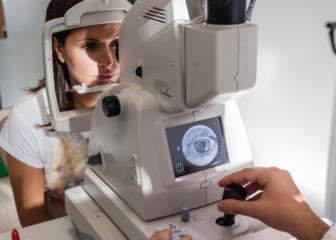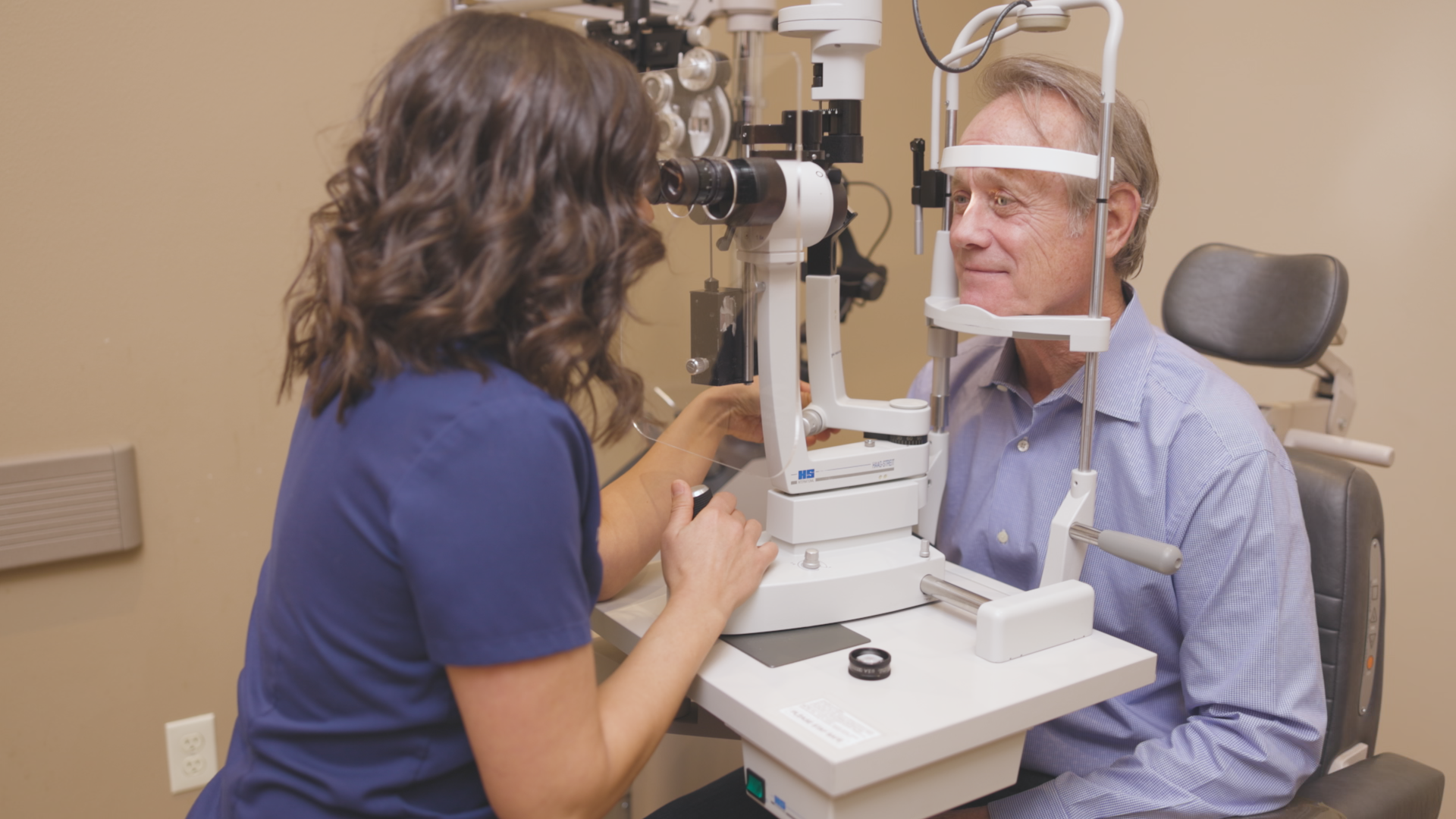Recognizing the Role of Your Eye Doctor in Keeping Vision
Recognizing the Role of Your Eye Doctor in Keeping Vision
Blog Article
Checking Out the most recent Technological Innovations in Optometry and What They Mean for Eye Doctors
From the accuracy of Optical Coherence Tomography to the nuanced insights offered by AI-driven analysis tools, these advancements are setting new criteria in individual assessment and treatment. As these improvements penetrate the method, eye doctors are encountered with the challenge of accepting these devices to enhance client results.
Technologies in Diagnostic Tools
Advancing the field of optometry, advancements in diagnostic devices have actually reinvented the method eye care professionals evaluate and identify aesthetic problems and eye problems. The past decade has actually experienced substantial technical innovations, allowing more thorough and exact examinations.
Another trick advancement is the intro of innovative corneal topography systems, which map the surface curvature of the cornea with accuracy. These devices are especially useful for fitting call lenses and detecting corneal problems. Digital retinal imaging has actually changed traditional ophthalmoscopy, providing in-depth, breathtaking views of the retina that facilitate extensive aesthetic evaluations.
The development of wavefront aberrometry has also been crucial, allowing the evaluation of refractive mistakes with unrivaled accuracy (Eye Doctor Optometrist). This technology helps in personalizing restorative lenses and boosting surgical results for refractive surgical procedures. Jointly, these analysis improvements encourage eye doctors to supply premium person care, making certain very early treatment and customized therapy approaches, inevitably boosting visual wellness outcomes
AI in Patient Management
Building on the structure of advanced analysis tools, the incorporation of synthetic intelligence (AI) in person monitoring represents a transformative leap for optometry. AI systems are increasingly employed to boost effectiveness, precision, and customization in client care. By assessing large amounts of data, AI can recognize patterns and anticipate possible ocular conditions, making it possible for eye doctors to customize interventions better. This ability is vital in handling persistent eye illness such as glaucoma and diabetic retinopathy, where very early detection and continual tracking are essential.
Additionally, AI-driven platforms help with streamlined individual interactions and administrative procedures. Automated scheduling, online consultations, and customized follow-up strategies not just improve client complete satisfaction yet likewise maximize time management for specialists. These systems can triage clients based upon the urgency of their conditions, making sure that those in vital demand receive punctual attention.
Moreover, AI boosts decision-making by offering eye doctors with evidence-based referrals and therapy paths. By integrating information from electronic wellness records, AI devices supply understandings that educate medical choices, lowering the threat of errors and enhancing person end results. As AI proceeds to advance, its role in client administration will likely broaden, reshaping the landscape of optometric care.
Advancements in Retinal Imaging
In the realm of optometry, retinal imaging has observed remarkable technical improvements that are improving analysis capacities and individual care. Innovations such as Optical Comprehensibility Tomography (OCT) and fundus photography have changed exactly how optometrists assess the retina and envision.
Improved imaging techniques like OCT angiography are more refining analysis precision. This non-invasive technique maps blood circulation in the retina, providing vital insights right into vascular health and wellness without the demand for color shots. Additionally, flexible optics innovation is being incorporated right into retinal imaging systems to fix eye aberrations, providing unprecedented photo clarity. Such innovations promote the identification of minute retinal adjustments that can symbolize condition progression.
In addition, innovations in expert system are increasing retinal imaging by making it possible for computerized analysis of big datasets. These systems aid eye doctors in identifying patterns a measure of pathology, consequently boosting analysis precision and performance. Collectively, these advancements are changing retinal imaging right into a foundation of modern eye care, improving outcomes and expanding restorative opportunities.
Teleoptometry's Expanding Function
Teleoptometry is progressively coming to be a vital component of eye treatment, driven by improvements in electronic interaction and analysis tools. As optometry embraces digital change, teleoptometry helps with remote assessments, permitting eye doctors to prolong their services past standard limits. This is especially valuable in rural and underserved areas where accessibility to specialized eye treatment is commonly restricted. By leveraging high-resolution video conferencing and progressed retinal imaging, optometrists can carry out detailed eye exams from afar, ensuring timely diagnosis and therapy.
The integration of expert system (AI) more improves teleoptometry, allowing the analysis of aesthetic data and assisting in the detection of eye problems such as glaucoma and diabetic person retinopathy. AI-powered algorithms can swiftly analyze complicated imaging information, offering optometrists with important understandings that reinforce professional decision-making.
Furthermore, teleoptometry supports connection of care with seamless assimilation with electronic wellness records (EHRs), permitting optometrists to keep comprehensive person histories. This ensures that individuals obtain tailored and regular care even when consulting with different professionals.
Regardless of these advantages, difficulties remain, consisting of ensuring data safety and taking care of client expectations. However, teleoptometry stands for a considerable stride in the direction of more easily accessible, reliable, and patient-centered eye treatment. As modern my blog technology evolves, its role is poised to broaden even more.

Future Trends in Eye Care
A myriad of innovative trends is set to improve the future of eye treatment, driven by technological improvements and the advancing needs of people. One significant fad is the assimilation click over here of man-made knowledge (AI) in diagnostics, which guarantees to improve the precision and performance of eye evaluations. AI algorithms can evaluate vast quantities of information from retinal images, potentially spotting problems like diabetic person retinopathy and glaucoma earlier than typical approaches.
Additionally, individualized medicine is obtaining grip in optometry, with genetic testing educating customized treatment strategies. This method intends to maximize individual results by customizing interventions to individual hereditary profiles. Wearable technology, such as clever get in touch with lenses, is also on the perspective, offering real-time tracking of intraocular pressure or glucose levels, thus supplying constant insights into eye and systemic health.
The fostering of augmented truth (AR) and digital truth (VR) in training and individual education and learning is one more arising trend. These modern technologies use immersive experiences that can enhance understanding and skills both for optometrists and clients. As these patterns develop, optometrists need to remain abreast of technical improvements to provide innovative treatment, ensuring better client results and satisfaction in the dynamic landscape of eye care.
Conclusion

Jointly, these article source diagnostic improvements equip optometrists to supply premium individual care, guaranteeing very early intervention and customized therapy strategies, inevitably enhancing visual health end results.

As these modern technologies continue to develop, eye doctors need to adapt and include them right into practice, eventually maximizing operations performance and raising the standard of eye treatment supplied to people.
Report this page